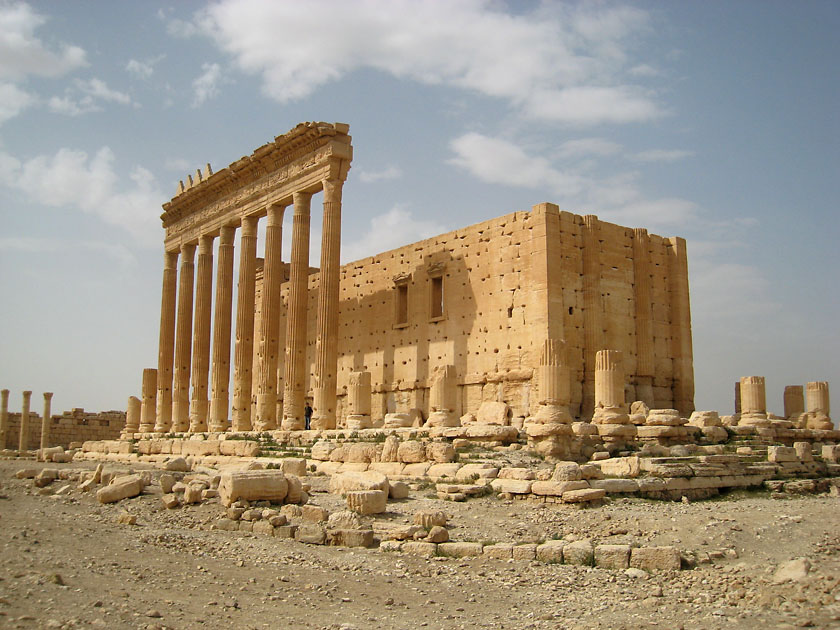The demolition of Palmyra’s Temple of Bel represents a tragedy, not only for the history of the Syria people but that of the global community as well, according to The U.N. Training and Research Agency (UNOSAT). The nearly 2,000-year old Roman Temple, considered amongst the most historically significant structures in the world, was razed to the ground by Islamic State (IS) radicals on Monday; part of the group’s systematic obliteration of the ancient Syrian cities rich cultural treasures.
Satellite images released by UNOSAT seemed to confirm the temples destruction, with only a pair of pillars seen still intact. The structure, a Unesco World Heritage Site, was one of the star attractions at Palmyra prior to the Syrian conflict. The city itself houses ruins dating back to the 1st century AD and which combine Roman and Greece architecture with that of local Persian influence.

UNOSAT Manager, Einar Bjorgo said some of the buildings in Palmyra would have dated back to the time of Jesus Christ (Nabi Isa), further emphasising the significance of the IS controlled city.
“We were hoping it was just rumours but unfortunately the imagery showed that the temple has been completely demolished. The structure around the larger wall that frames the temple is still standing, but the main temple itself is completely destroyed,” he declared.
Both UNOSAT and UNESCO have come out strongly in their condemnation of the way IS has treated the ruins of Palmyra, and Bjorgo said solutions were necessary to try and find ways to ensure the preservation of such sites. He signalled out peace deals as one of the few possible methods in which access could be gained to the sites, and solutions potentially enacted.
“We do hope that with some ceasefire agreements under negotiations with the U.N special envoy maybe that can be a starting point if they can hold. We do hope little by little the situation can improve, but there is no quick fix for this at all. Right now it all looks dim,” he admitted.
While the demolitions have stoked public uproar, it has also unified the global population in support of the efforts to bring about better protection of culture and heritage sites.
“It is a very difficult situation. We do hope we will see Palmyra less affected, but it is unpredictable and difficult for us to assess,” he said.
Syria is extremely rich in cultural heritage, but difficulties in entering the conflict zone means little is known about how much of the country’s historical sites have actually been razed. VOC






 WhatsApp us
WhatsApp us 


1 comment
the isis brutes are two-faced skunks, they loot the "movables" which the peddle to the west who spaqwned them, they sell oil to turkey and through parts of the kurdish areas, the whole area is awash with two-faced skunks including some syrians usa eu nato turkey saudis gulf states etc